Lost Wax Casting Of Bronze
February 6, 2009
Carved Stone Creations works with expert bronze foundries who are skilled in making bronze statues through the process of Lost Wax Casting. Lost wax casting is the process by which bronze is cast from an artists sculpture. This is the most precise metal casting technique in existence, ensuring accurate reproductions of the original sculpture and exquisite detail. Developed over 4,000 years ago, this ancient practice varies from foundry to foundry, but the steps which are usually used in casting bronze sculptures in modern bronze factories are generally standardized.
- Sculpting An artist creates an original artwork from wax, clay, or another material.
- Mold making A mold is made of the original sculpture. Most molds of small sculptures are made from plaster. To preserve the fine details on the original artworks surface, there is usually an inner mold made of latex, vinyl, or silicone. Usually, the original artwork is destroyed during the making and initial deconstruction of the plaster mold.
- Wax Once the plaster-and-latex molds are finished, the first layer of wax is applied by painting into the rubber mold to capture fine detail. Then more molten wax is poured into it, enough to cover the inner surface of the mold.
- Removal of Wax The hollow wax copy of the artwork is removed from the mold. The artist may reuse the mold to make more wax copies, but wear and tear on the mold limits the number of copies possible.
- Chasing A heated metal tool is used to rub out the marks that show the “parting lines”, where the pieced of the mold came together. The wax now looks like the finished bronze, exactly like the original work. Wax pieces that were molded separately can be heated and attached.
- Spruing The wax copy is “sprued” with a tree-like structure of wax that will eventually provide paths for molten bronze to flow and air to escape. When the wax is “lost”, these gates will become the avenues for the molten metal to flow into the piece. The vents allow the gas to escape when the molten bronze is poured and will prevent air pockets from forming. The carefully planned spruing usually begins at the top with a wax cup, which is attached by wax cylinders to various points on the wax copy.
- Slurry A “sprued” wax copy is dipped into a slurry of liquid silica, then into sand-like “stucco”. The slurry and grit combination is called a “ceramic shell” mold material. The shell is allowed to dry.
- Burnout The ceramic shell-coated piece is placed in a kiln where heat hardens the silica coating into a shell, and the wax melts and runs out (“lost wax”). Now all that remains of the original artwork is the negative space.
- Testing The ceramic shell is allowed to cool, then is tested to see if it will hold water. Cracks and leaks can be repaired at this time.
- Pouring The shell is reheated in the kiln to harden the patches, and then placed into a tub filled with sand. Bronze is melted then poured carefully into the shell. If the shell were not hot, the temperature difference would shatter the mold. The bronze-filled molds are now allowed to cool.
- Release The shell is hammered or sandblasted away, releasing the rough bronze. The spruing that were recreated in metal are cut off to be re-melted and used in another casting.
- Metal Chasing For large pieces, reassembly will take place in the welding area by carefully realigning and refitting the pieces. The bronze copies are chased until all the signs of casting are removed, and again the sculpture looks like the original artwork.
- Patinazation The bronze is colored using chemicals applied to heated or cooled metal. This coloring is called patina, and is often green, black, white, or a brownish color to simulate the surfaces of ancient bronze sculptures. A patina finish can also replicate marble or stone. Depending on whether the metal is sandblasted or polished the finish can be opaque or transparent. After the desired patina has been achieved, a coating of wax is applied to the surface while it is hot in order to ensure durability of color and finish. This serves to protect the surface from oxidation and also gives the finished bronze its luster.
Contact us or call us at 1-866-759-1920 if you would like more information or a price quote on any custom bronze piece for private gardens to large public memorials.
